Integrating strength training to enhance running performance and prevent running injuries is important for all levels of runners. At RunLab, it is not uncommon to hear from clients, “I can barely do a push-up.” “I never do strength training. I don’t want the bulk to slow me down.”
Runners need more strength as a population. This is a universal truth, and yet runners almost seem to take pride in the lack of strength training they do. Somehow the idea that strength training is detrimental to one’s running performance has taken a space in the collective running consciousness. Often neglected by distance runners, strength is very important for injury prevention and performance optimization and is often neglected. Having adequate strength will lower the probability of injury by preparing muscles to accept increased demand during training cycles.
In order to understand the importance of strength in the context of gait, let’s take a quick look at each phase of the running gait cycle:
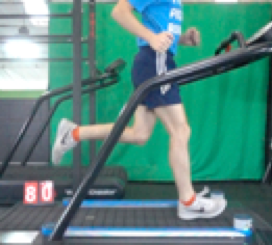
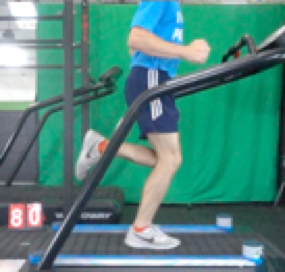
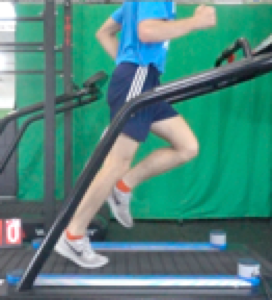
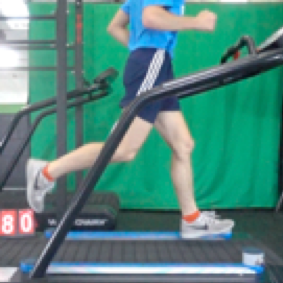
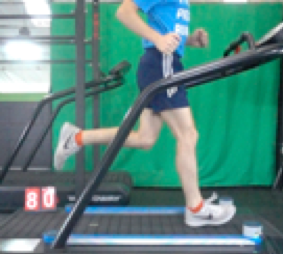
If you look at the pictures, you can see that you are performing a series of single-leg squats and hops in rapid succession when you run. Due to the explosive nature of running, you are producing four to ten times your body weight in force PER STEP. It is vital to have sufficient strength to accept these loads if you hope to run injury-free. If you do not have ample strength in the primary working muscles, you will start to recruit smaller secondary muscles to perform the role of the primary muscles. Secondary muscles are not adequately equipped to do the job of a prime mover, either due to size or position in the body. Too much reliance on secondary muscles will result in a premature break down and aberrant movement patterns programmed into your body over time.
It is important to understand that strength comes in various forms. Functional strength is even more important than brute strength when it comes to a repetitive motion exercise like running. Being able to squat 2,000 pounds is an example of brute strength. However, this type of strength does not translate well to running. Functional strength is the ability to use your strength to perform your desired movement pattern under repetitive load. In order to be able to transfer strength to the desired movement pattern, one must be able to coordinate muscle firing patterns efficiently. Having functional strength will not only allow you to have more control over where the load is being produced while you are running, but also how efficiently the absorption load from the ground is transformed into propulsion energy. You gain functional running strength through performing exercises that look very similar to the running motion. Think of single leg squats, step-ups, or single leg plyometric exercises.
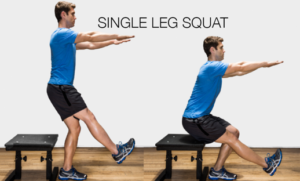
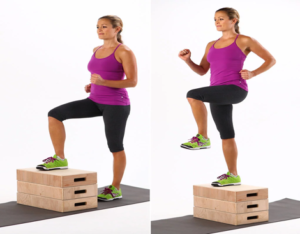
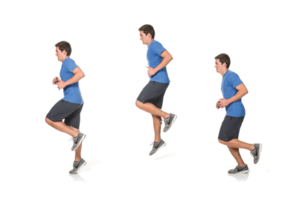
One important point in regards to strength training is the concept of “bulking up”. With regards to bulking up, it is important to understand that strength has two major components. One component involves the nervous system’s ability to recruit motor units. Your brain is a major piece of hardware. From your brain, you have nerves that act as wires that conduct electrical signals to motor units that control muscle contractions. The more you perform an exercise, the thicker the myelin sheath, or the insulation surrounding the nerves, becomes. This makes the signal from your brain to your muscles more efficient. The more efficient your brain is at activating motor units, the more force production you are going to be able to generate and thus the stronger you are going to be. Nervous system adaptations happen rather quickly and the strength gains you experience within the first eight weeks of a strength and conditioning program will be neurological.
The second major component of strength is the cross-sectional area of your muscle. You gain cross-sectional area, or hypertrophy when you cause micro-trauma to muscle tissue through exercise. The stressed muscle repairs itself by having the myofibrils increase in thickness and number. Cross-sectional muscular gains take at least eight weeks of training. This is part of the reason to get your running gait re-analyzed every eight to twelve weeks. This gives an adequate amount of time for neurological and muscular strength adaptations to take place.
A final word with regards to the idea that strength will “bulk you up and slow you down”. The main components contributing to muscle bulk are nutrition and the amount of testosterone in your body. You would have to work a muscle very hard, have the right amount of testosterone, and eat a specific diet to bulk up significantly. The amount of high intensity cardio most distance runners undergo keeps muscles lean, but we are often missing the strength to take full advantage of our high intensity workouts, which leads to injury and suboptimal performance.
Consider adding regular strength sessions into your weekly routine to help enhance running performance and prevent running injuries. Your body will thank you for it, and so will your mind when you hit that next PR because you didn’t break down half way through the race!
Thank you for taking the time to read our RunLab™ Blog! We hope that you use this information to run more injury free and to optimize your running performance.
For more information about the RunLab™ team and to get your running stride analyzed by one of the preeminent gait specialist teams in the country, please visit WWW.RUNLABAUSTIN.COM
Outside of the Austin area? You can still have your running stride analyzed by one of the best teams in the country. Just visit WWW.RUNLAB.US to see where our partner filming locations are based or choose the self-film option.
RunLab™. Helping runners help themselves.
ABOUT LORIN WILSON

Lucky enough to be a part of a great running program in high school, Lorin not only went on to win the 2007 Texas 4a State Championship in the mile but also went on to earn a track scholarship to the University of Texas at Austin. Lorin graduated from the The University of Texas at Austin with a major in Exercise Science and a minor in business. While still attending UT, he began coaching distance running at St. Stephen’s Episcopal school where he would coach student-athletes to break school records in the 400 meter, 800 meter, 1600 meter, 3200 meter, 5000 meter, 4×400 meters, and 4×800 meters. After graduating from UT and during his aforementioned tenure at St. Stephen’s, Lorin also worked for the local Austin non-profit Power For Parkinson’s as a fitness instructor, which provides free fitness programs for individuals with Parkinson’s disease. No longer a trainer at Power For Parkinson’s, Lorin does fundraising campaigns for Power For Parkinson’s. During this period he also started BlueSky Running LLC, which provided on-site Yoga programs for employees of the Austin Independent School District (teachers, administration, bus drivers etc).
Lorin has the following physical training certifications: National Academy of Sports Medicine (NASM) Certified Personal Trainer, Performance Enhancement Specialist (NASM), Corrective Exercise Specialist (NASM), Senior (elderly individuals) Fitness Specialist (NASM), Fitness Nutrition Specialist (NASM), RunLab Clinical Gait Specialist, USA Track & Field Level 1 Coach, and a USA Yoga Alliance 200 Hour Certified Yoga Instructor certification earned while studying in Rishikesh, India. Lorin is a MBA Graduate with an emphasis in Accounting from Texas State University. He was also the President of the Texas State MBA Student Association and a Future Texas Business Hall of Fame Scholarship Recipient.
Lorin has a marathon best of 2:37:05 (5:59 per mile pace) run at the 2011 Los Angeles Marathon. He ran his first 100 miler in 17 hours 30 minutes (10:15 per mile pace) in Flagstaff, Arizona in September 2018. He ran the 2019 Boston Marathon in 2:37:59. He also has three top 10 finishes (5th, 7th, and 10th) in the Capital 10,000, the largest 10k in Texas, with the latest two being 2016 and 2017. Lorin looks forward to working towards his goal of making high-quality fitness accessible to everyone while he continues to train for 100 mile races.
LEARN MORE:
RunLab™ Podcast RUN.
RunLab™ YouTube channel
